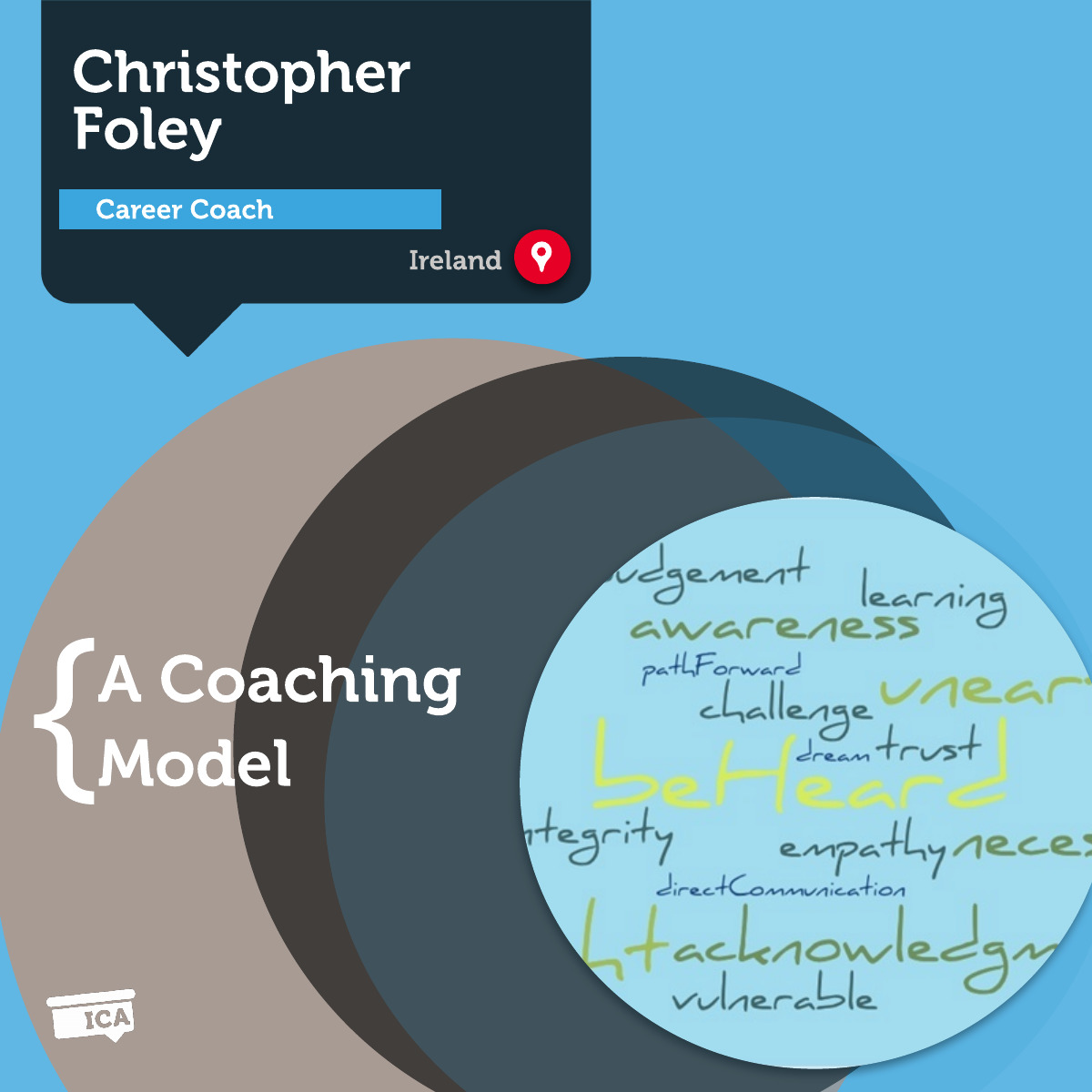A Coaching Model By Christopher Foley, Career Coach, IRELAND
To be coached, is to allow yourself to be heard and not judged, to allow you unearth new insights, to succumb to being vulnerable, to let you define what’s necessary and to allow you plot your journey ahead. Author Chris Foley
Above is a quote that I created myself, which underpins my coaching philosophy. It encapsulates what coaching is and identifies the different phases a client will go through. As I unearth new insights and garner more experience as a Coach this model will evolve and grow. But at this point in time, it represents my pillars of coaching, which allows this genuinely powerful engagement to occur between client and coach.
Allow Yourself to Be Heard and Not Judged

At its most fundamental, ‘coaching’ provides a safe environment that allows a client to be listened to. To be listened to, without being judged.
If you pause to reflect on that statement; that may be something that every person needs at some point in their life. To be listened to, and not to be judged.
This is the guarantee that coaching provides.
Key coaching Principle at play
- The curiosity of the coach; for the coach to be truly curious, they must listen closely to the client. A coach’s curiosity, on behalf of the client (i.e. the curiosity is not for the coach’s benefit, it’s to allow the client to elaborate further on the point they have raised), is such a vital element of exploration and understanding.
Unearth New Insights
The word ‘unearth[1]’ is extremely important here. The client is allowed to discover or reveal what is troubling/concerning them. ‘Unearth’ adds some additional context in that it associates a detailed search process or sifting through of information to uncover or reveal the findings. With this process comes insights, new perspectives, learnings, awareness, appreciation, and understanding.
Key coaching Principles at play
- Allow the client to plot the search or discovery route; if the client has multiple areas where the discussion can go, they will be asked which avenue they want to explore. The client will select the route and pace.
- Acknowledgment and harnessing of the clients’ insights; as insights/awareness/learnings emerge, the client will be acknowledged, potentially asked how they feel and how they can use these new findings.
Succumb to Being Vulnerable
If a client allows any of their vulnerability to surface inside coaching, it can be a major factor in the success of a coaching session or engagement by providing positive momentum as they progress towards their session goal. The honesty and integrity of the client are paramount in achieving this, in addition to the presence, trust, and support offered by the coach. This can be difficult for clients, but the psychologically safe environment provided by coaching and the coach supports this process.
Key Coaching Principal at play
- Empathy; if vulnerabilities come to the fore, empathy shared between coach and client will foster trust, which is crucial to success.
Define What Is Necessary
The famous saying ‘necessity is the mother of invention’ springs to mind here. If one can define what’s necessary, the means to achieving that comes into focus. As the client and coach explore the session’s topic; defining the necessities with the client’s goal in mind becomes crucial. With this in place, it allows the client to come up with meaningful and tangible actions which will allow them to move forward.
Key Coaching Principal at play
- Solid Coaching Agreement; the coaching agreement should get as close as it can to the necessities for the session at hand. Without a clear understanding of the goal for the session and what success looks like for the client, the realization of the goal becomes significantly more difficult (moving goalposts concept).
Plot the Journey Ahead
The next steps on the client’s journey towards their goal can be established. In conjunction with defining the steps the coach will work with the client to flesh out the finer details (e.g. support, timelines, accountability, commitment) such that these steps become more real and truly achievable.
Key Coaching Principal at play
- Direct communication; once a coaching session transitions to creating an action plan or set of steps to proceed with, it’s important that the coach directly asks the client about timelines, accountability, and support, e.g. when are you going to carry out step 1? This facilitates more well-defined steps for the client and introduces accountability.
The Takeaway
If you allow yourself to experience coaching, based on the above philosophy, you will experience several powerful things:
- Being listened to (to be heard)
- A more fundamental awareness of yourself; your beliefs, your strengths, your weaknesses, your ambitions
- What the necessities are for you
- A tangible path forward towards increased happiness
Learn How to Create Your Own Coaching Model
Your Coaching Model reflects your values,
philosophies and beliefs and must communicate who you will coach
and the problems you will solve.
[1] https://www.collinsdictionary.com/dictionary/english/unearth
